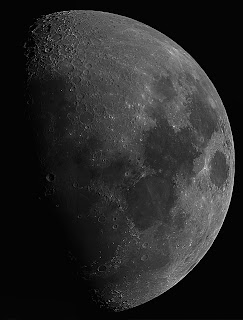I have always been excited about the mysteries of what lies in the heavens beyond our planet earth.
The journey starts at age 10 when I received my first telescope. It was a Tasco 60mm refractor telescope. The closest objects to us in space is our own star, the sun and eight planets that revolve around it. I first started into space towards the largest apparent object that is safe to look at in space, the moon. My telescope had a zoom eyepiece marked in power from 20x to 60x. My finderscope took a while to get it calibrated and aligned with my telescope. The moon was a good place to start because it was so large. When I was finely able to make it to the moon it was glorious with its craters along the terminator. The terminator is the line of the moon between dark and light . The light from the sun casts shadows illuminating the shape of the craters. You can't see near the detail on a full moon. Although being closer to the moon is still exciting. The distance to the moon is 238,900miles. The diameter of the earth is 7917.5 miles. To escape the earth's gravitational force and enter space, you need to hit a speed of 25,054 miles/hour about 33 times the speed of sound. If you cut the rockets so you stop accelerating once in space then you can get to the moon in about 9.5 hours. This is one of my first astrophotography pictures taken with a APO triplet refractor Explorer Scientific 104mm diameter, 714nn focal length. Camera is a ZWO API0294MC-S. This was about 30 min of video and stacked in Autostakkert and processed in Photoshop. Picture was taken Jan 25 2018.


My first look too! Didn't have the filter and was my eye sore!
ReplyDelete